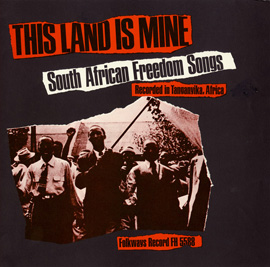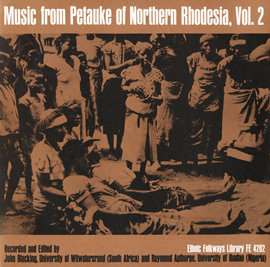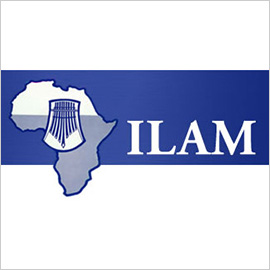Summary
Learn to play and compose music with the mbira. Explore the use of the instrument in Zimbabwe to understand the relation of music to history and culture and its ability to incite social change. Lesson includes notations, historical background, and recordings and images from Smithsonian Folkways.
Suggested Grade Levels: 3-5, 6-8, 9-12
Country: Zimbabwe
Region: Africa
Culture Group: African
Genre: Mbiri
Instruments: Mbiras, bass, alto, and soprano xylophone
Language: Shona
Co-Curricular Areas: Social Studies
National Standards: 1, 2, 4, 5, 6, 8, 9
Prerequisites: None
Objectives:
- History of Rhodesia/Zimbabwe
- Understanding music as an index of social change
- Life and work of Zimbabwean musicians
- Basic knowledge of language, geography, values, and musical culture of Zimbabwe
Material:
- “Rungano rgwe rombe”
mbira recording, also images of mbira players - “Zimbige”
mbira recording, also images of mbira players - “Chemtengure”
- “Nyoka Musango”
- “Mwari Komborera I Africa”
- “Nkosi Sikeleli Afrika (National Anthem of South Africa)”
- Berliner, P.F. (1978). The Soul Of Mbira: Music and Traditions of the Shona People of Zimbabwe. Chicago: University of Chicago Press.
- Berliner, P. (1980). John Kunaka, mbira maker. African Arts, 14(1), 61-67+88.
- Tracey, H. (1968). The lion on the path and other African stories. New York: Frederick A. Praeger, Inc.
- Adzinha, A.K., Maraire, D. & Tucker, J.C. (1986). Let your voice be heard! Danbury, CT: World Music Press.
- Maps of Zimbabwe and Southern Africa
- Pictures of varying types of Mbiras, from SFW, internet, Berliner books, liner notes
Lesson Segments:
- An Introduction to the Mbira (National Standards 2, 5, 6, 8, 9)
- Music and Social Change in Zimbabwe: The Cimurenga Songs (National Standards 4, 6, 8, 9)
- Children’s Culture in Zimbabwe (National Standards 1, 2, 4, 5, 6, 8, 9)
- An Integrative, Performance-Based Extension Project for Choirs - God Bless Africa: An African Anthem (National Standards 1, 5, 6, 8, 9)
1. An Introduction to the Mbira
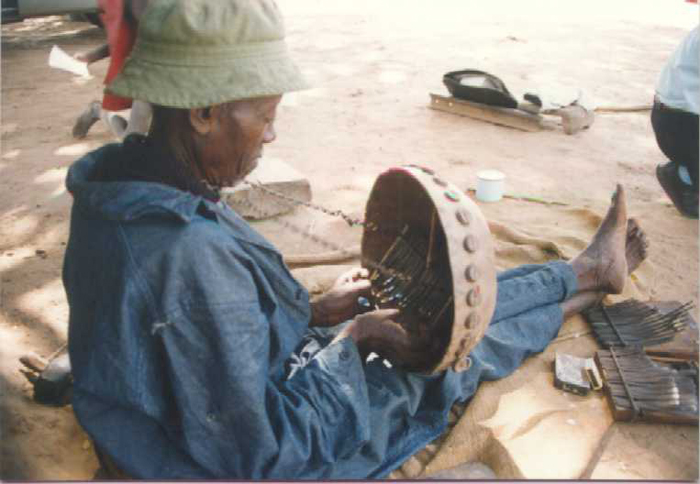
“Rungano rgwe rombe”
from Songs for entertainment, dance, and parties from the Karanga-speaking Mhari of Zimbabwe (1958) | ILAMTR082
“Zimbige”
- Play Rungano rgwe rombe or Zimbige :
- Rungano rgwe rombe
- Zimbige
- Ask students the following questions before the first listen:
- What instruments are being played?
- What might those instruments be made of?
- How might they be played?
- Ask students the following questions and listen again:
- What do you notice about the form of the piece being played?
- What do you notice about the phrasing of the selection?
- Are there any unusual features, particularly regarding use of scale or intonation?
- Zimbabwe and the Mbira
- Show maps of Southern Africa and Zimbabwe as an introduction to the unit.
- Show pictures of varying types of mbiras; (Images can be found on the SFW website and also in “The Soul of Mbira” by Paul Berliner)
- Brief discussion of parts of mbira: keys, gourd resonator, something to create buzzing, tuning (For a brief introduction to mbira construction see Berliner, 1978, 9-11)
- Distribute pictures of Mbiras to small groups of students
- Have the students note:
- The name of the mbira
- What it appears to be made of
- How many keys it has and how they are organized into rows
- What is acting as a resonator
- What is used to create the buzzing quality of the mbira
- Have each group briefly present their findings
- If you have an mbira or two, pass them around for student to see, feel, experiment
- Playing the music of the Mbira
- Listen to Chemutengure (SFW recording/Transcriptions)
- Read liner notes together
- Transfer to Orff instruments (see accompanying transcriptions)
- Read rhythms of each part separately
- Divide class into two parts and clap rhythms together
- Demonstrate each part on Orff instruments
- Select students to play parts, first separately and then together
- Play and explore Chemutengure Variations I, II, III (opportunity to discuss the concept of Variation in music!)
- Optional Biographical Reading
- John Kunaka, Mbira Maker, by Paul Berliner
- Opportunity for written assignment
- Mbira Making in the Classroom. (Source: Wiseman and Langstaff, 1979, Making Music, p 53)
- Each student or pair will need seven tongue depressors and two large, black and silver binding clips (the big ones used to clip larger stacks of paper)
- Instruct students to clamp two tongue depressors across the other five, arranging them so they protrude at different lengths
- Experiment with the sounds created and adjust the protruding depressors to adjust the pitch
- Opportunity for short compositions for self-constructed instruments
- Also, opportunity to integrate an art project; see Wiseman and Langstaff for more complicated homemade mbira designs
Assessment:
Can the students explain and play the mbira?
2. Music and Social Change in Zimbabwe: The Chimurenga
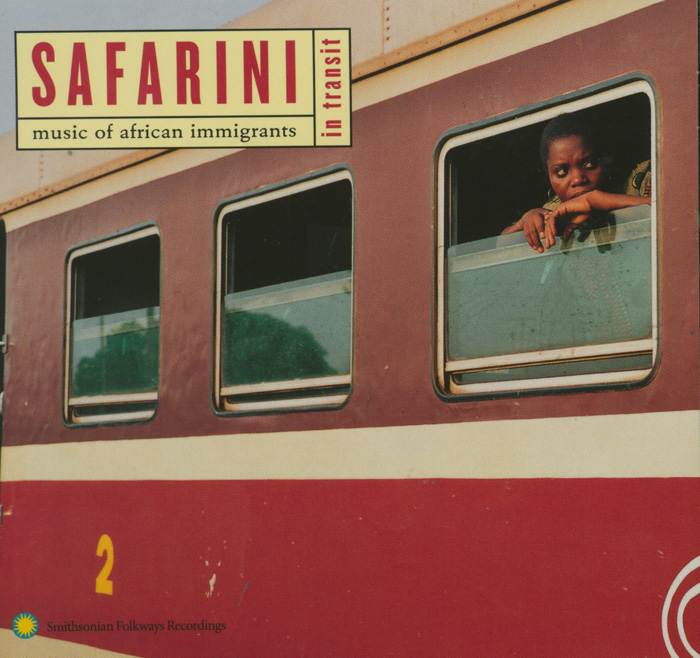
“Chemtengure”
from Safarini in transit: Music of African immigrants (2000) | SFW40457
“Nyoka Musango”
“Mwari Komborera I Africa”
- A Brief History of Zimbabwe: Colonization through Independence
- Read “Music as an Index of Socio-political Change in Zimbabwe” together (included at back of unit)
- Explore time-line
- Listening Examples
- Safarini in Transit: Nyoka Musango (SFW Recording)
- Nyoka Musango
- Identify Instruments
- Discussion of evolution of Mbira music: similar style, song of Thomas Mapfumo, played by marimba ensemble
- Opportunity for Arranging: Advanced students might arrange Nyoka Musango for Orff Ensemble
Assessment:
Can students discuss social change in Zimbabwe?
3. Children’s Culture in Zimbabwe
- Stories and transmission of culture
- Read or recall favorite Greek myths or Aesop’s Fables
- Discuss the story as a vehicle for the transmission of cultural values to children
- The Shona Story-Song: The Lion on the Path
- Read the Foreword to Hugh Tracey’s “The Lion on the Path”
- Teach students the sung portion of the Story Song “The Lion on the Path (Tracey, 1968, p2-3)
- Teacher tells story, students perform song at appropriate moments in the story (encourage students to use appropriate dramatic voices: tired voice as the man grows weary, a high squeaky voice for the rabbit)
- Develop story into a dramatic re-telling using students as the actors
- Add in Orff accompaniment on the Mbira part (see transcription)
- Opportunity for the creation of a new story song based on the transmission of current, American values (i.e. say no to drugs, stay in school, respect your parents and teachers). Alternatively, students might adapt favorite myths or fables into the story song format. Students can compose a brief musical theme to be interjected into the drama at varying points.
- A Shona Hand-Clapping Game: Sorida, from Adzinha, A.K., Maraire, D. & Tucker, J.C. (1986). Let your voice be heard! Danbury, CT: World Music Press, p. 9.
- Teach students the basic clapping movements, without a partner
- Clap hands, swoop up and out, and clap again
- From a clapping position, extend the right hand with the back of the hand facing out; alternate extending and clapping
- Approximate clapping a partners hands, crossing over with the right and then the left and then clapping hands together (R, L, Clap)
- Sing the song and have students count the number of times you sing the whole word “sorida” (4)
- Sing again and have them count the number of times you sing just “rida” (8)
- Sing again and count the number of times you sing da-da-da (4)
- Work out the pattern on the board
- Perform song
- Add clapping motions alone
- Create concentric circles of partners
- Work through clapping patterns with the partner
- Sing and clap
- Move the outside circle one partner to the left and play again
Assessment:
Can the students complete the hand-clapping game? Do they understand the children’s cultural tradition of Zimbabwe?
4. An Integrative, Performance-Based Extension Project for Choirs — God Bless Africa: An African Anthem

“Nkosi Sikeleli Afrika (Lord Bless Africa) / Amandla, Awethu (Strength is Ours) - (medley)”
from This Land Is Mine: South African Freedom Songs (1965) | FW05588
- a. Zimbabwe: Mwari Komborera Africa
- Listen to SFW selection
- Learn melody and Shona lyric (see transcription)
- Discuss English translation
- Learn and perform with Orff accompaniment (see transcription)
- South Africa: Nkosi Sikelele Afrika
- Listen to SFW selection
- Learn melody and Xhosa lyric
- Read through Sesotho and Afrikaans verses
- Discuss English translation
- Discuss the role of language in unifying a nation that does not all speak the same language
- Compare English translations of Zimbabwe and South African versions: similarities of theme, differences between themes
- Repeat sequence for Tanzanian and Zambian version of the anthem
- Continue to compare themes of freedom, liberty, unity, religion
- Performance Opportunities
- i. Choral Arrangements: Consider performing one of the choral arrangements included in the resource list. It may be possible to incorporate one or more of the languages discussed in class into the South African arrangements available.
- Consider performing the Unison and Orff accompaniment arrangement provided here (see transcription). Makes a nice pairing with a full choral arrangement.
- An opportunity to integrate some of the historical and cultural information covered in class into performances. Teach the audience in the following ways:
- Consider having students prepare program notes detailing the history of this African Anthem, its role in the promotion of African Nationalism, its use in many countries, in different languages.
- Consider having students introduce the piece, its historical and cultural context, and identify the languages and verses being performed.
- Consider having students explain the use of Orff accompaniment to approximate the traditional Zimbabwe instrument, the Mbira. Students could also prepare a brief demonstration/presentation on the Mbira
Assessment:
Can the students sing the tine with Orff accompaniment?
Extentions:
- Walt Hampton books, Hot marimba and Marimba Mojo, Collections of Zimbabwean-style music for Orff Instruments
- Consider bringing in culture bearers from the community: a local marimba ensemble, an mbira player, a visiting artist from Zimbabwe, a musician originally from Zimbabwe, or a person who has studied or lived in Zimbabwe.
- Opportunities for in-depth discussion about South Africa, colonization, apartheid, issues of race and oppression
- Parallels in political theater (See extended reading list for readings on the nature and role of political theater in Zimbabwe.)




